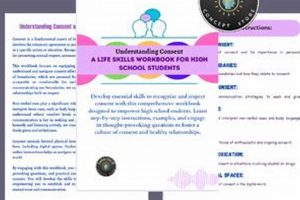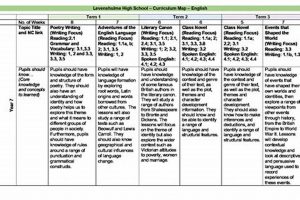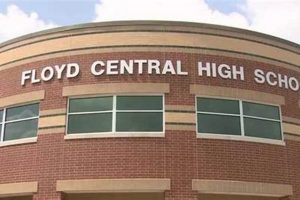Planning gatherings for former classmates involves brainstorming and selecting appropriate activities, venues, and themes to foster camaraderie and celebrate shared experiences. For example, a casual picnic in a local park offers a relaxed atmosphere, while a formal dinner at a hotel ballroom provides a more elegant setting. The chosen elements should reflect the class’s personality and preferences.
These gatherings offer an opportunity to reconnect with old friends, reminisce about shared memories, and learn about classmates’ life journeys. They can strengthen bonds formed during formative years and provide a sense of community and belonging. Historically, such events have served as milestones, marking the passage of time and celebrating the collective experiences of a graduating class. They offer a unique opportunity to reflect on personal growth and shared history.
The following sections will explore various aspects of planning these events, including venue selection, theme development, catering options, entertainment choices, and effective communication strategies for reaching attendees. Consideration will also be given to budgetary constraints and strategies for maximizing participation.
Tips for Planning Class Reunions
Successful class reunions require careful planning and attention to detail. The following tips offer guidance for creating a memorable and engaging event.
Tip 1: Establish a Planning Committee: Forming a committee distributes the workload and ensures diverse perspectives are considered. Delegating tasks such as venue selection, communication, and entertainment planning streamlines the process.
Tip 2: Determine a Realistic Budget: Establishing a budget early helps guide decision-making and prevents overspending. Consider factors such as venue rental, catering, decorations, and entertainment costs.
Tip 3: Choose an Appropriate Venue: The venue should accommodate the expected number of attendees and align with the desired atmosphere. Options range from casual settings like parks or restaurants to more formal locations such as hotels or banquet halls.
Tip 4: Develop a Communication Strategy: Effective communication is crucial for maximizing attendance. Utilize social media, email lists, and traditional mailings to reach classmates and provide updates.
Tip 5: Select Engaging Activities: Plan activities that cater to diverse interests and encourage interaction. Consider options such as icebreaker games, photo booths, or live music.
Tip 6: Incorporate Memorabilia: Displaying yearbooks, photos, and other memorabilia can evoke nostalgia and spark conversation. Creating a slideshow or video montage can further enhance the reminiscent atmosphere.
Tip 7: Consider Accessibility: Ensure the chosen venue and activities are accessible to all attendees, including those with disabilities. Provide necessary accommodations and support.
By implementing these tips, organizers can create a memorable and enjoyable experience for all attendees. A well-planned reunion strengthens connections and celebrates shared history.
These considerations are essential for fostering a successful event. The next section will offer concluding thoughts and emphasize the lasting impact of these gatherings.
1. Theme Selection
Theme selection plays a pivotal role in shaping the atmosphere and overall experience of a high school reunion. A well-chosen theme provides a framework for the event, influencing dcor, activities, and even attire. This thematic focus can enhance attendee engagement by creating a cohesive and immersive environment. For instance, a “Back to School” theme might involve decorating the venue to resemble a classroom, offering school-themed snacks, and encouraging attendees to wear attire reminiscent of their high school days. Conversely, a “Hollywood Glamour” theme could involve a red carpet entrance, elegant dcor, and a focus on sophisticated attire.
The selection of a relevant theme can foster a stronger sense of connection among attendees. By evoking shared memories and experiences associated with the chosen theme, a sense of nostalgia and camaraderie can be cultivated. A theme also provides a starting point for conversations and interactions, facilitating reconnections and the sharing of life updates. Practical considerations for theme selection include the overall budget, venue limitations, and the demographics of the graduating class. Aligning the theme with the interests and preferences of the majority of attendees contributes to a more successful and enjoyable event.
In conclusion, theme selection is not merely a superficial detail but a crucial element in shaping the overall experience of a high school reunion. A thoughtful and well-executed theme can significantly enhance attendee engagement, foster a stronger sense of connection, and create a more memorable event. Challenges such as balancing diverse preferences and staying within budget can be addressed through careful planning and communication within the organizing committee. Ultimately, a well-chosen theme provides the foundation for a successful and meaningful reunion experience.
2. Venue Booking
Venue booking is integral to successful high school reunion planning. The chosen location significantly influences the event’s atmosphere, attendee comfort, and logistical feasibility. Careful consideration of factors such as capacity, accessibility, amenities, and location is crucial. A venue’s capacity must comfortably accommodate the anticipated number of attendees and allow for comfortable movement and socializing. Accessibility considerations ensure attendees with disabilities can fully participate. Amenities such as adequate parking, restroom facilities, and climate control contribute to attendee comfort. The venue’s location should be convenient and accessible for the majority of attendees, minimizing travel burdens. For instance, a reunion targeting a geographically dispersed class might benefit from a centrally located hotel with ample lodging options, while a locally concentrated class might opt for a familiar restaurant or community center.
The venue’s character should align with the reunion’s overall theme and objectives. A formal reunion might necessitate an elegant ballroom or banquet hall, while a casual gathering could be held at a park, restaurant, or museum. Budgetary constraints also play a significant role in venue selection. Negotiating venue rental fees, exploring package deals, and considering off-peak dates can help maximize resources. Securing the venue well in advance ensures availability and allows ample time for other planning aspects, such as catering and entertainment. Venue selection directly impacts attendee experience and the overall success of the reunion. A poorly chosen venue can lead to logistical challenges, attendee discomfort, and a diminished sense of occasion. A thoughtfully selected venue, however, can enhance the reunion’s atmosphere, foster a sense of community, and contribute to a memorable experience.
In summary, effective venue booking requires careful consideration of capacity, accessibility, amenities, location, thematic alignment, and budget. A well-chosen venue sets the stage for a successful and memorable high school reunion. Challenges in venue selection often involve balancing competing priorities, such as finding a location that is both accessible and within budget. Addressing these challenges requires careful planning, open communication within the organizing committee, and a willingness to explore various options. Ultimately, the chosen venue serves as the backdrop for reconnections, reminiscing, and celebrating shared experiences.
3. Catering Arrangements
Catering arrangements are a crucial component of high school reunion planning, significantly impacting attendee satisfaction and the overall event experience. Careful consideration of catering options ensures appropriate refreshments are available, dietary restrictions are accommodated, and the chosen style aligns with the reunion’s theme and atmosphere. From casual buffets to formal plated dinners, catering choices contribute to the event’s flow and create opportunities for socializing and networking.
- Menu Selection
Menu selection should reflect the preferences of the attendees and the formality of the event. A casual reunion might feature a buffet-style meal with diverse options, including comfort foods and lighter fare. A more formal event might necessitate a plated dinner with carefully curated courses. Accommodating dietary restrictions, such as vegetarian, vegan, and gluten-free options, demonstrates attentiveness to attendee needs and promotes inclusivity. For example, offering a variety of salads, entrees, and desserts ensures a broader range of preferences are met.
- Beverage Options
Beverage options should complement the menu and cater to varying preferences. Non-alcoholic choices, such as water, juice, and soda, are essential. Alcoholic beverages, if offered, should be served responsibly, with designated driver programs or transportation options available. Consideration should be given to the age range of attendees and the overall tone of the reunion. For instance, a cash bar might be appropriate for some events, while an open bar might be more suitable for others. Offering a signature cocktail related to the class year or school mascot can add a personalized touch.
- Service Style
The service style should align with the event’s formality and atmosphere. A buffet-style service encourages mingling and allows attendees to select their preferred dishes. A plated dinner offers a more structured and formal dining experience. Passed hors d’oeuvres can facilitate networking during a cocktail hour. The chosen service style impacts the event’s flow and contributes to the overall ambience. For example, a casual outdoor reunion might benefit from a buffet or food truck service, while a formal gala might require a plated dinner with table service. The level of formality should align with the reunion’s theme and the expectations of the attendees.
- Budget Considerations
Catering costs can represent a significant portion of the reunion budget. Careful planning and negotiation with caterers are essential. Exploring various catering packages, comparing pricing structures, and setting a realistic budget help manage expenses effectively. Consideration should be given to factors such as the number of attendees, the complexity of the menu, and the level of service required. For example, opting for a buffet-style meal with seasonal ingredients can be a cost-effective approach. Clearly communicating budgetary limitations with caterers helps ensure transparency and facilitates the development of a suitable menu within the allocated resources.
Catering arrangements directly impact the overall success of a high school reunion. Providing delicious and appropriate food and beverages enhances attendee satisfaction, facilitates socializing, and contributes to a positive and memorable experience. A well-planned catering strategy demonstrates attention to detail and consideration for attendee preferences, strengthening the sense of community and celebration. Careful coordination of menu selection, beverage options, service style, and budget considerations ensures that the catering arrangements align with the reunion’s overall goals and contribute to a successful and enjoyable event.
4. Entertainment Planning
Entertainment planning forms an integral part of crafting memorable high school reunions. The chosen entertainment significantly influences the atmosphere, attendee engagement, and overall event satisfaction. Well-planned entertainment bridges generational gaps, caters to diverse preferences, and fosters a vibrant, celebratory environment. It provides a backdrop for socializing, reminiscing, and creating new memories. For example, a live band playing music popular during the graduating class’s high school years can evoke nostalgia and encourage dancing, while a photo booth with props and backdrops provides interactive entertainment and lasting mementos. A carefully curated program of activities caters to diverse interests, accommodating both active participants and those who prefer a more relaxed setting. Balancing structured activities with opportunities for informal socializing ensures an inclusive and enjoyable experience for all attendees. Entertainment choices should reflect the overall theme and tone of the reunion. A formal reunion might feature a string quartet or a professional DJ, while a more casual gathering might include lawn games, karaoke, or a slideshow of class photos.
Effective entertainment planning considers the demographics of the graduating class, accounting for varying musical tastes, activity preferences, and physical limitations. Providing a range of options ensures inclusivity and maximizes engagement. For instance, offering both a dance floor and a designated quiet area caters to different preferences. Incorporating activities that encourage interaction, such as trivia games centered around shared high school experiences, can further strengthen bonds and spark conversation. Logistical considerations, such as sound systems, lighting, and staging, ensure seamless execution and enhance attendee enjoyment. Managing the flow of activities throughout the event maintains momentum and prevents lulls in engagement. Integrating entertainment with other elements of the reunion, such as catering and dcor, creates a cohesive and immersive experience. For example, coordinating the music playlist with the meal service enhances the dining atmosphere. The entertainment program should be thoughtfully paced to allow ample time for socializing and networking, facilitating reconnections and the sharing of life updates.
In conclusion, entertainment planning plays a crucial role in shaping the success and memorability of a high school reunion. A well-crafted entertainment program fosters a vibrant and engaging atmosphere, encourages interaction, and creates lasting memories. Challenges in entertainment planning often involve balancing budgetary constraints with attendee expectations and accommodating diverse preferences. Addressing these challenges requires careful planning, effective communication within the organizing committee, and a willingness to explore creative and cost-effective solutions. Ultimately, the chosen entertainment should enhance the celebratory atmosphere and contribute to a positive and meaningful reunion experience for all attendees.
5. Communication Strategies
Effective communication strategies are essential for successful high school reunions. Communication serves as the connective tissue, linking organizers with attendees and facilitating information dissemination throughout the planning process and the event itself. Strategic communication builds anticipation, maximizes participation, and fosters a sense of community among classmates. From initial announcements to post-reunion follow-up, clear, consistent, and engaging communication is crucial. For instance, establishing a dedicated website or social media group provides a central hub for information sharing, allowing attendees to stay updated on event details, RSVP, and connect with classmates. Utilizing a multi-channel approach, encompassing email, social media, and traditional mailings, expands reach and accommodates diverse communication preferences. Personal outreach by committee members can further strengthen connections and encourage participation, particularly for classmates who may be hesitant or less digitally connected.
The chosen communication methods should reflect the demographics of the graduating class and consider accessibility needs. Clear and concise messaging ensures information is easily understood and avoids ambiguity. Regular updates maintain attendee engagement and excitement, while timely responses to inquiries demonstrate responsiveness and professionalism. Transparent communication regarding event details, costs, and logistical arrangements builds trust and fosters a sense of inclusivity. For example, providing clear instructions on registration procedures, travel arrangements, and accommodation options simplifies the process for attendees and minimizes potential confusion. Sharing updates on planned activities and entertainment generates excitement and encourages participation. Post-reunion communication, such as sharing event photos and gathering feedback, extends the sense of community and provides valuable insights for future reunions. Effectively leveraging communication channels strengthens connections, manages expectations, and contributes to a positive and memorable reunion experience.
In summary, strategic communication serves as the cornerstone of successful high school reunions. A comprehensive communication plan fosters engagement, maximizes participation, and ensures information accessibility for all attendees. Challenges in communication often involve reaching classmates with outdated contact information, managing diverse communication preferences, and maintaining consistent messaging across multiple channels. Addressing these challenges requires meticulous planning, leveraging available technologies, and fostering collaboration within the organizing committee. Ultimately, effective communication strategies cultivate a sense of shared anticipation, facilitate seamless event execution, and contribute to a meaningful and memorable reunion experience for all participants.
6. Budget Management
Budget management is a critical aspect of planning successful high school reunions. Prudent financial planning ensures the event remains feasible and accessible to all attendees while maximizing the value of available resources. A well-defined budget guides decision-making throughout the planning process, from venue selection and catering arrangements to entertainment choices and marketing efforts. Effective budget management enables organizers to deliver a memorable and enjoyable experience without incurring unnecessary expenses or placing undue financial burden on attendees.
- Cost Estimation
Accurate cost estimation is the foundation of a realistic reunion budget. Organizers must carefully research and anticipate expenses associated with various aspects of the event, including venue rental, catering, entertainment, decorations, printing, postage, and contingency funds. Gathering quotes from multiple vendors allows for price comparison and informed decision-making. Detailed cost breakdowns enable organizers to identify potential areas for cost savings and allocate resources effectively. For example, comparing catering quotes based on menu options and service styles allows organizers to select the most cost-effective option that aligns with the reunion’s theme and attendee preferences. Accurate cost estimation minimizes financial surprises and ensures the budget aligns with the available resources.
- Fundraising and Revenue Generation
Fundraising and revenue generation strategies can supplement attendee contributions and expand the reunion’s budgetary possibilities. Strategies might include ticket sales, sponsorships from local businesses, merchandise sales, or alumni donations. Clearly communicating fundraising goals and the intended use of funds promotes transparency and encourages participation. For instance, offering sponsorship packages that provide local businesses with visibility at the reunion can generate additional revenue. Diversifying revenue streams reduces reliance on individual attendee contributions and allows for a more ambitious event scope.
- Expense Tracking and Control
Maintaining meticulous records of all expenses throughout the planning process is crucial for effective budget management. Utilizing budgeting software or spreadsheets facilitates expense tracking and provides a clear overview of financial activity. Regularly reviewing expenses against the budget allows organizers to identify potential overspending and implement corrective measures. For example, tracking catering expenses against the allocated budget helps ensure costs remain within the projected range. Implementing cost-control measures, such as negotiating discounts with vendors or exploring less expensive alternatives, helps maximize resources and maintain financial stability.
- Contingency Planning
Allocating a contingency fund within the budget safeguards against unforeseen expenses or unexpected circumstances. This financial buffer allows organizers to address unexpected costs, such as last-minute venue changes or vendor cancellations, without jeopardizing the overall budget. A contingency fund provides flexibility and peace of mind, ensuring the reunion can proceed smoothly even in the face of unforeseen challenges. For example, allocating a contingency fund can cover unexpected costs associated with inclement weather or last-minute changes in attendee numbers. Proactive contingency planning mitigates financial risks and ensures the reunion remains financially viable.
Effective budget management is essential for delivering a successful and memorable high school reunion. Careful cost estimation, strategic fundraising, diligent expense tracking, and proactive contingency planning ensure financial stability and maximize the value of available resources. A well-managed budget empowers organizers to create a meaningful and enjoyable experience for all attendees, fostering a sense of community and celebration without incurring unnecessary financial burdens. By prioritizing financial responsibility and transparency, organizers can ensure the reunion remains accessible and enjoyable for everyone, strengthening connections and celebrating shared memories.
7. Activity Coordination
Activity coordination plays a crucial role in shaping the success and memorability of high school reunions. Well-planned activities provide structure, facilitate interaction, and cater to diverse interests, ensuring an engaging and inclusive experience for all attendees. Strategic activity coordination enhances the celebratory atmosphere, fosters a sense of community, and creates opportunities for classmates to reconnect and reminisce.
- Icebreakers and Mingling Activities
Icebreakers and mingling activities serve as initial catalysts for interaction, helping attendees reconnect with familiar faces and forge new connections. These activities can range from simple introductions and name tag games to more structured activities, such as trivia centered around shared high school experiences or “two truths and a lie.” Effective icebreakers create a comfortable and welcoming atmosphere, encouraging conversation and easing social anxieties. For example, a “find someone who…” activity encourages attendees to mingle and learn about classmates’ life journeys. Thoughtfully designed icebreakers set a positive tone for the reunion and pave the way for more in-depth conversations.
- Group Activities and Entertainment
Group activities and entertainment provide structured opportunities for engagement and cater to diverse interests. Options might include a live band or DJ, a karaoke session, a slideshow of class photos, or organized games and competitions. The chosen activities should reflect the overall theme and tone of the reunion and consider the demographics of the graduating class. For instance, a class with a strong interest in sports might enjoy a friendly competition, while a class known for its artistic talents might appreciate a showcase of student artwork or a live performance. Well-chosen group activities create a shared experience and generate lasting memories.
- Scheduled Downtime and Informal Socializing
While structured activities provide focal points for interaction, scheduled downtime allows for informal socializing and spontaneous conversations. Designated areas for quiet conversation or casual seating arrangements facilitate organic interactions. This unstructured time allows attendees to reconnect at their own pace and deepen conversations begun during structured activities. For instance, providing a comfortable lounge area with soft seating encourages relaxed conversation and provides a respite from more energetic activities. Balancing structured activities with informal socializing caters to varying preferences and fosters a more relaxed and inclusive atmosphere.
- Memorial Activities and Remembrance
Incorporating memorial activities provides an opportunity to honor and remember classmates who have passed away. This might involve a moment of silence, a slideshow tribute, or a designated memorial space. These activities acknowledge the shared history of the graduating class and provide a space for reflection and remembrance. For example, creating a memory board where attendees can share photos and anecdotes of deceased classmates offers a poignant tribute and fosters a sense of collective remembrance. Handling memorial activities with sensitivity and respect reinforces the bonds of community and shared experience.
Effective activity coordination transforms a high school reunion from a simple gathering into a dynamic and memorable experience. By offering a diverse range of activities that cater to various interests and preferences, organizers foster a vibrant and inclusive atmosphere that encourages interaction, strengthens connections, and celebrates shared history. Thoughtful activity coordination contributes significantly to the overall success of the reunion, creating lasting memories and reinforcing the bonds of community among classmates.
Frequently Asked Questions
This section addresses common inquiries regarding the planning and execution of class reunions, providing clarity and guidance for organizers.
Question 1: How far in advance should planning commence for a successful reunion?
Commencing planning 9-12 months prior to the target date allows ample time for tasks such as venue booking, communication outreach, and activity coordination. Early planning mitigates potential challenges and ensures sufficient time for thoughtful decision-making.
Question 2: What are effective strategies for locating classmates and gathering contact information?
Leveraging online resources such as social media platforms, alumni databases, and dedicated reunion websites can facilitate locating classmates. Traditional methods such as contacting previously known associates or utilizing yearbooks can supplement digital searches. Privacy considerations should be respected throughout the process.
Question 3: How can organizers manage budgetary constraints effectively while delivering a memorable event?
Establishing a realistic budget early in the planning process is crucial. Exploring cost-effective options such as utilizing public venues, potluck-style catering, or volunteer entertainment can help manage expenses. Transparent communication with attendees regarding costs and fundraising efforts can foster understanding and support.
Question 4: What are key considerations for selecting an appropriate reunion venue?
Venue selection should consider factors such as capacity, accessibility, location, and available amenities. The venue’s character should align with the overall theme and atmosphere of the reunion. Accessibility features ensure inclusivity for all attendees. Logistical factors such as parking and transportation options should also be considered.
Question 5: How can organizers ensure diverse interests and preferences are accommodated during the reunion?
Providing a variety of activities and entertainment options caters to diverse interests. Offering both structured activities and opportunities for informal socializing ensures inclusivity. Consideration should be given to the age range and physical limitations of attendees. Gathering feedback from classmates during the planning process can provide valuable insights into preferences.
Question 6: What are effective strategies for maintaining momentum and engagement post-reunion?
Sharing photos, videos, and attendee feedback through online platforms can extend the reunion experience and maintain engagement. Creating a dedicated communication channel for classmates facilitates ongoing connection and fosters a sense of community. Organizing smaller, more frequent gatherings can further strengthen bonds.
Careful planning and attention to detail contribute significantly to the success of any class reunion. Addressing these frequently asked questions proactively streamlines the planning process and enhances the overall experience for attendees.
The following section offers concluding remarks and emphasizes the lasting impact of these gatherings.
Conclusion
Organizing successful class gatherings requires careful consideration of various factors. Thorough planning encompasses theme selection, venue booking, catering arrangements, entertainment planning, communication strategies, budget management, and activity coordination. Each element contributes significantly to creating a memorable and engaging experience for attendees. Strategic planning ensures these gatherings serve as opportunities to reconnect, reminisce, and celebrate shared experiences, fostering a sense of community and strengthening bonds formed during formative years.
These gatherings offer a unique opportunity to reflect on shared history and celebrate collective achievements. Careful consideration of attendee preferences and logistical details ensures these events foster lasting connections and create cherished memories. The significance of these events lies in their ability to strengthen bonds, rekindle friendships, and celebrate the enduring impact of shared experiences. Organizers are encouraged to prioritize thoughtful planning and open communication to ensure these gatherings remain meaningful and memorable occasions for all attendees.







